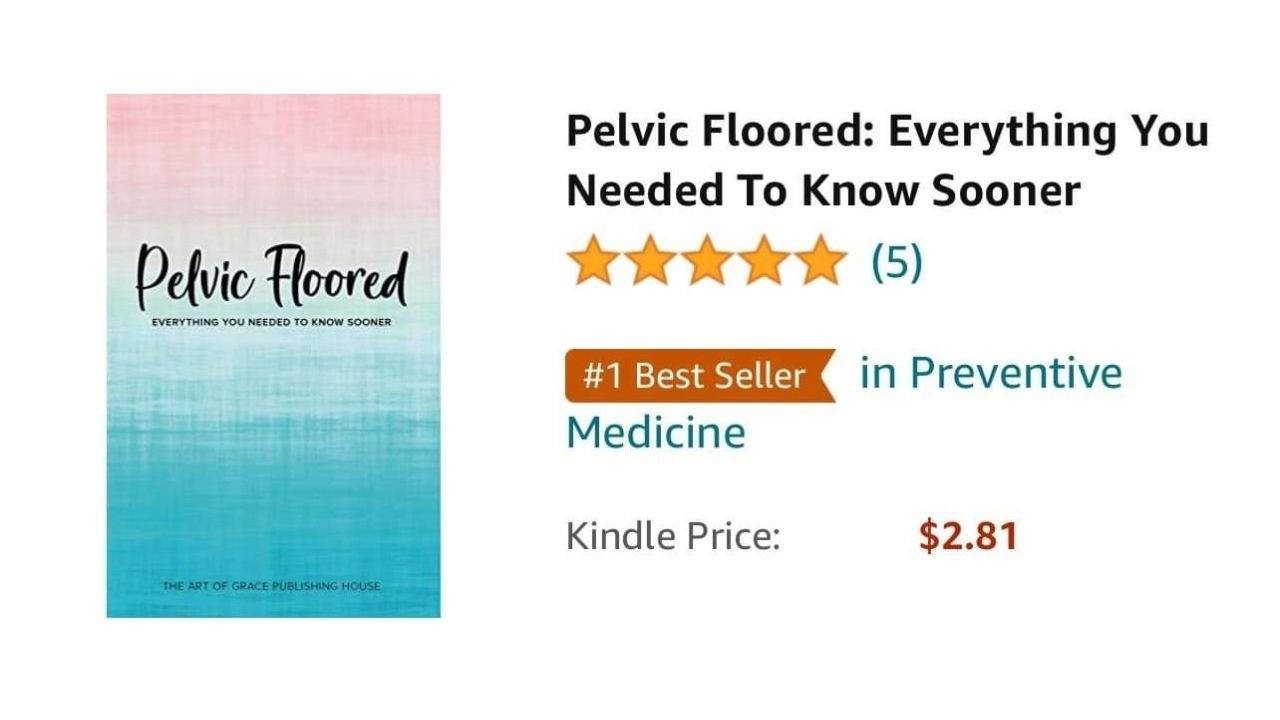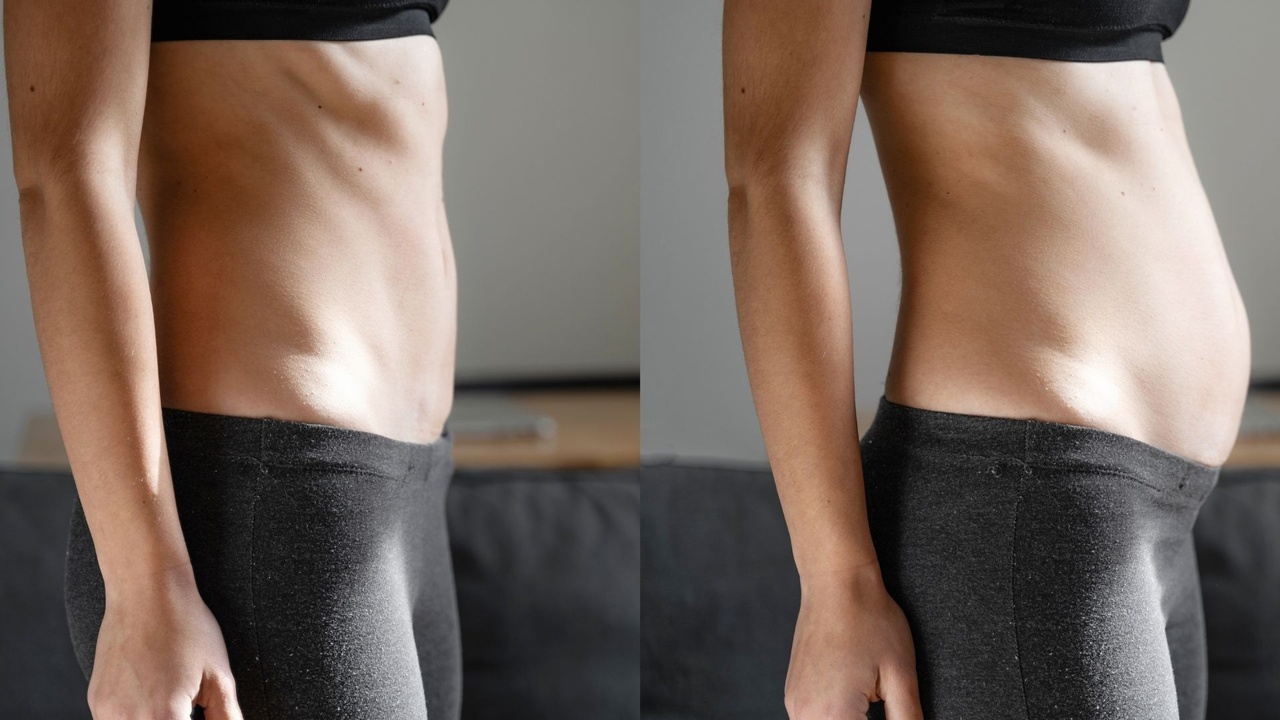The effect of collagen on the pelvic floor

Just as with the rest of the body, the pelvic floor loses collagen as we age. So just like when our boobs and our chin starts to feel the effects of gravity over time due to decreased skin elasticity, so too does the pelvic floor. A lifetime of high impact activity without a proper pelvic floor routine to provide support can cause just as much (if not more) wear and tear on your pelvic floor as pregnancy and childbirth. Which is why it becomes even more important to strengthen and tone the pelvic floor as we get older, whether we’ve given birth or not.
I am seeing more and more women in their 40s who’ve never given birth who say to me “I think I might have a diastasis but how can this be when I've never given birth?”
Collagen is kind of like a glue that holds all the cells in the body together. It is very important for helping the connective tissue of your pelvic floor to remain linked together in order to support healthy function and to prevent developing pelvic floor dys...
Want to learn how to flatten your mummy tummy?!

You’ve heard me say it a thousand times on instagram “your breath is the most important piece of the puzzle”, but WHY exactly is it so important??
During pregnancy the front of our ribcage must flare out in order to make space for our growing baby. Remember how it became more and more difficult to breathe towards the end of your pregnancy..? We basically all forget HOW to breathe during pregnancy.
After pregnancy, when the bottom of the ribcage remains flared out in the front, it causes the stomach to also protrude. It is not possible to get a truly flat stomach if the ribcage is still flared.
Look at the image below 👇🏻. This is a student of mine. I've put the arrows on there so that you can see the difference in ribcage flare. Look at the difference in the angle of the arrow. It might not look like much, but it makes a HUGE difference to the shape of your midsection. We have almost entirely corrected it due to correcting the BREATHING MECHANICS!! The line of the stomach wi...
The Pelvic Floor: Everything You Needed To Know Sooner!

I was recently given the incredible opportunity and great privilege to collaborate with doctors, physical therapists and birth professionals in the kind of book that should be handed out in high schools and gynecologists offices. This book was a passion project like no other. All of the authors of this book had something unique to share. From personal stories, to anatomy lessons, to helpful tips and solutions to some of the most common postpartum symptoms.
But this book is not just for women. Men have a pelvic floor too. And many even suffer from Pelvic Floor Dysfunction (PFD) without even knowing it. Do you know a man who refers to his “dad belly”? That could very well be related to PFD. In women it’s affectionately referred to as the “mummy tummy”, the fupa, the mom pooch. We’re told “you’re a mom now. It’s part of the package”, but it simply isn’t true. We just have to have the knowledge of how to fix it.

This book covers so much exciting ground. From how the pelvic floor c...
Stress vs Urge Incontinence - What’s the difference and how do they each relate to your pelvic floor?

Stress Incontinence occurs when you cough, laugh, run, jump, sneeze etc, and you pee your pants a little as a result. This often happens when too much pressure is exerted on the bladder, forcing urine out. In most cases, this is a result of weakened pelvic floor muscles, usually due to childbirth, age, and/or menopause. But there are also circumstances that can aggravate stress incontinence, such as obesity, smoking, high-impact activities like running and jumping, and a chronic cough. Women can also experience stress incontinence when doing things like standing from sitting, getting in and out of a vehicle, lifting heavy things and having sex.
Urge Incontinence is also known as Overactive Bladder (OAB) and occurs when there is a strong urge to urinate despite the fact that your bladder may not be full. This urge is often strong enough that you can’t make it to the bathroom in time. While women with stress incontinence leak urine, women with urge incontinence may experience a sudde...
What is Diastasis Recti and can it be fixed?

A diastasis is a thinning of the fascia in the front of your abdomen. When you peel an orange, think of fascia as being like the white layer between the juicy orange and the thick skin. Fascia is the layer in between your skin and your muscles and it runs through your entire body, connecting and facilitating movement. It’s an incredibly overlooked structure in our body that plays a key role in holding us together and is a very important piece of the body puzzle.
With a diastasis (or the thinning of this part of the fascia), think about when you wear a hole in the knee of your jeans from over stretching the fabric. That is essentially what has happened with a diastasis. But the big difference is that fabric cannot repair itself (you’d have to sew on a patch to prevent it from getting worse), but the body has a remarkable ability to repair itself. As long as you stop doing the things that are making the thinning worse in order to allow the body the space to heal.
Fascia is primar...
What is a low pressure ab exercise and why i teach them when working to retrain & reconnect the core…

So we all know and love high pressure ab exercises (crunches etc), but what exactly is a low pressure ab exercise? Well, it’s pretty much any ab exercise where the spine stays in neutral, and it can have varying degrees of intensity. Here’s an example of a moderate low pressure ab exercise for you to try:
- Lie on your back and bring your legs into tabletop position.
- Lift your pelvic floor and wrap your transverse abs to a level 3 like we talked about above
- Bring your right hand and press it against your left knee and raise your left hand up towards the ceiling
- As you exhale, press your right hand and your left knee towards each other quite hard without changing the position of your spine or pelvis, whilst simultaneously reaching your left arm and right leg out straight to about 45 degrees from the ground (diagonal)
- As you inhale, bring it back in
- Think about diagonal energy coming across your core from your right ribs to your left hip and notice just how much core strength i...
Here's what other Mammas are saying about the Postpartum Protocol

Are you wondering whether the Postpartum Protocol 12 week course is worth the investment? Wondering whether you'll find the time to complete it? Wondering whether you'll notice a difference in your body..?
Here are some testimonials from other Postpartum Protocol mammas who are saying it's worth the commitment!





Want to experience these results for yourself..?
We would LOVE to have you join us! Click the link below to sign up
Emma xo



